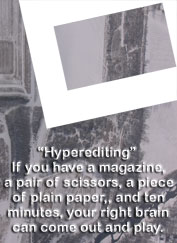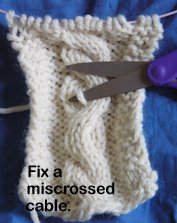.
I said the museum was hot, hotter, and hotter still.
This room was higher in the building than others, and was very hot indeed. Not as hot as the ladies' room next to it (which was, I bet, in the neighborhood of 100F), but very hot. I am processing these pics on a too-hot day -- these objects will always be associated with TOO HOT in my mind. (I should revisit this post, and look at them, in the depths of winter..........)
Love this shape........
"Etrusco-Corinthian oinochoe, Vulci (Pitigliano), Tomb 26, ca. 600 BC, Attributed to the Bearded Sphinx Painter. The Bearded Sphinx Painter, who worked in Vulci, chose to imitate Corinthian wares."
All righty then.
Some people think that if you take pics, you are distancing yourself from what you observe. Maybe this is true for them, I can't say. For me, taking pics is an enhancement to my Looking. And it is certainly an enhancement to my overall experience. I did not read the info I photographed for this piece until just now.
Aren't you glad to know about the Bearded Sphinx Painter? I am......
Kind of sad we don't know the potter, though. It's the shape I love, not the painting.....
These were little. Maybe four inches tall. Love this shape. Many moons ago, when I made ceramics, I made some things in this shape. I was never quite sure what to *do* with this shape, but it is fun to make, and so different from most things you can throw on a potters' wheel.....
Love the shape of the cup; not so sure I think the handle is an improvement.
Kyathos, late 6th C. BC.
"Terracotta Votive Figurine, 5th/4th century B.C."
"This little figurine could have served as an inexpensive substitute for a live pig, and, as such, could have been either dedicated as a sanctuary votive or buried in a tomb."
Love the pig, and its mohawk, and love that we can see the marks of the maker's fingers in the clay. (as always, click on any image to embiggen)
Tickled that the camera caught this nice sharp image of the coin.
The opposite end of the ceramic spectrum from that quickly-made, mass-produced pig.
Hours and hours on the decoration alone. I hadn't noticed until I got this on the big screen that the decoration includes lines scratched through the (iron?) pigment. (This scratching-through-one-surface-to-another technique is called sgraffito.)
Love the shape of this piece...............
"East Greek 'Caeretan' Neck Amphora, ca. 525-510 B.C."
I wonder what the textiles owned by these people may have looked like. I see complicated brocades when I look at these pots..............
This is a closeup of the biggest pot above.
Love the repeating shapes of the people, apparently holding hands. I wonder if this was some sort of line dance........
Ok. We have left that extremely hot Greek room, and are now in a (marginally cooler) room where things came from places named Beth this and that. I think we must be in Israeli space. I apologize for my poor capture of info. I offer the excuse that my brain was heated to a liquid state, rather than retaining any vestige of sharpness.
This lidded vessel must have been about 15" tall. I think this is the largest ancient glass object I've ever seen.
I mentioned yesterday that I hadn't known how spectacular the Penn Museum collection is before I saw it. I have visited the University of Michigan archaeology museum, and I have enjoyed it. But I didn't see things that I'd never seen the like of.
In the Penn Museum, it was one new-to-me thing after another. As I wandered through that hot, Hot, HOT museum, I came to understand that I had happened into a totally spectacular place. If I lived in Philadelphia I would visit it often, and should I return to Philadelphia, I will surely revisit. On a much cooler day. Preferably one when all the children are taking a state-mandated test and so will not be in any museums.
Unfortunately the info I captured for his object did not give its location. Late 1st C. AD
Want to guess? I'd never seen anything like this, and had to read the info.....
"Upper Bearing for Potter's Wheel," and "Lower Bearing for Potter's Wheel." "Beth Shemesh"
"1. Bead Mold, Ceramic, Beth Shean, stratum VII, Late Bronze IIB, 1300-1200 BCE"
"2. Beads (2), Faence, glass, Beth Shean, stratum VIII, Late Bronze IIB, 1300-1200 BCE"
"3. bead, Faience, Beth Shean, stratum IX, Late Bronze IB-IIA, 1450, 1300 BCE"
"Plaque-winged Sphinx, Ivory, Nimrud, Iraq, 8th century BCE. Phoenician ivory carving was widely exported. This piece of Phenician-style ivory furniture inlay was found at the Assyrian capital of Numrud in northern Iraq."
I know, from A History of the World in 100 Objects, that trade with faraway places was common in the ancient world. So interesting, to see examples...........
"The metal displayed here was found inside the accompanying jug."
1, 2, 3, and 5 are ingots or flakes of gold. 6 is ingots and flakes of lead.
"Beth Shean, stratum V, Iron IB, 1150-1000 BCE"
Alas, I did not capture any info about this mosaic. I am thinking it was Etruscan, but really don't know.
Love the critter's expression...... Doesn't he look like a lounge lizard?
The museum has the best Egyptian collection I've seen that belongs to an American museum. Most of it is in very low light, and my pics were blurry and yellow.........
You just don't see much Egyptian papyrus........
"Section of the Book of the Dead of Neferrenpet" (my image of the info is very blurry -- interestingly, I can easily make out familiar words, but the unfamiliar ones are a struggle!) "Der el Medineh" (my best guess!) "Dynasty 19, (1292-1190 BCE)"
Before we entirely leave Egypt, let's have a glance into a very large room holding part of the Egyptian section of the collection. On the left in this next image, you can see an Egyptian sculpture, and you can get some sense of how big that room is. Those windows are about three stories up.....
The room in which we are now standing was at least as tall, and had a dome.
We have entered China. This lion (though he looks like a dog to me) is one of a pair. They are the largest cloisonné objects ever discovered. Those are normal-size crowd-control stanchions -- on the order of a yard tall? Most of the items I've seen that are decorated with cloisonné will fit in your hands. This is really big........
"Ca. 17th century, Qing Dynasty. China, possibly from Beijing." Makes you wonder where they got it -- it didn't say on the blue info card you can see at right. I wonder who commissioned it, and who made it........
A closer look at the cloisonné decoration.
So far I've avoided mention of the hordes of screaming children in the African and Mesoamerican parts of the museum. The kids in the Chinese section were with their parents, rather than in hordes, and they were little. They weren't screaming, but they were running around and jumping off the benches. I left that room. One day of screaming hordes at the Franklin Institute was more than enough to use up my entire store of patience with children-in-museums.
We are now in the Japanese Zen Buddhist section.
This amazing thing is a drum. "Mokugyo, Wooden Laquered 'Fish' Drum, Japan, 19th century"
I have seen tiny cheap brass jingly things in this shape, but never a drum. It must have been a yard tall. Or maybe a bit more.
Love the garment. I show you the whole thing, because the description says he is life-sized. Um. The chair may be life-sized. The guy is ... not. Not unless he was a very little guy, in real life.
The more I think about this, the weirder I think it is. They don't put sizes on info cards in museums, no doubt figuring (quite reasonably) that you are looking at it; you know what size it is. (As someone who photographs the info, and the objects, I'd love to see size info with the provenance, materials, etc., so I don't have to try to remember how big things were. But size never appears in the info.)
So why, for this particular object, do they decide to talk about the size at all, and then, having decided to talk about it, why does it say "life-size" when it's so small? Was he really that little? If so, that's as interesting as anything else about the sculpture, I think..... Was that a usual size for an adult man, in that place and time? Or?
I am reminding myself of Davy, adopted by Anne and Marilla in the second Green Gables book. Davy was full of curiosity, and his questions often were punctuated with with "I want to know!"
Me and Davy, we wonder, and we want to know!
I always admire the work of anyone who can make a hard material look like fabric........... Love these flowing folds.
.
Subscribe to:
Post Comments (Atom)












































No comments:
Post a Comment